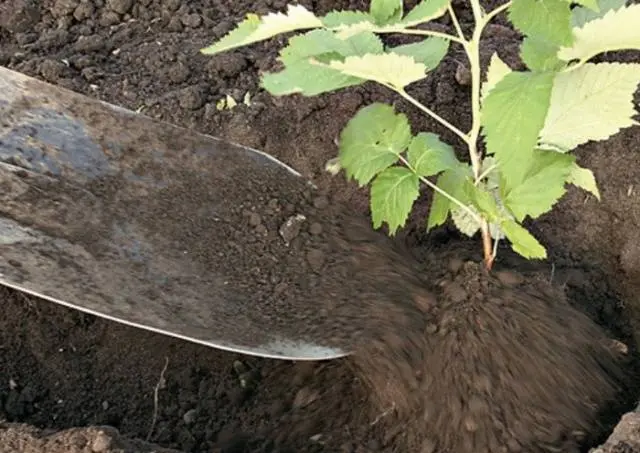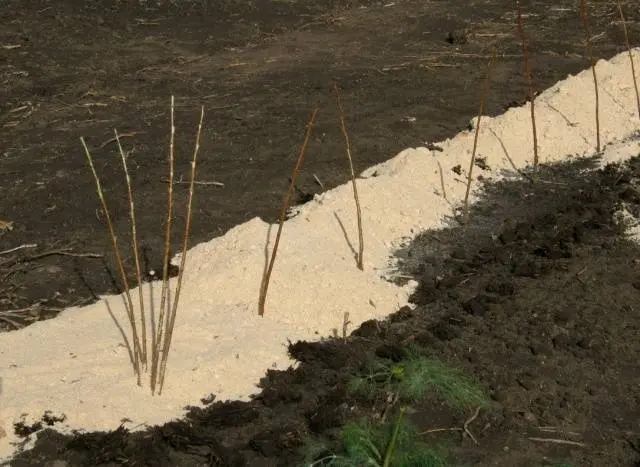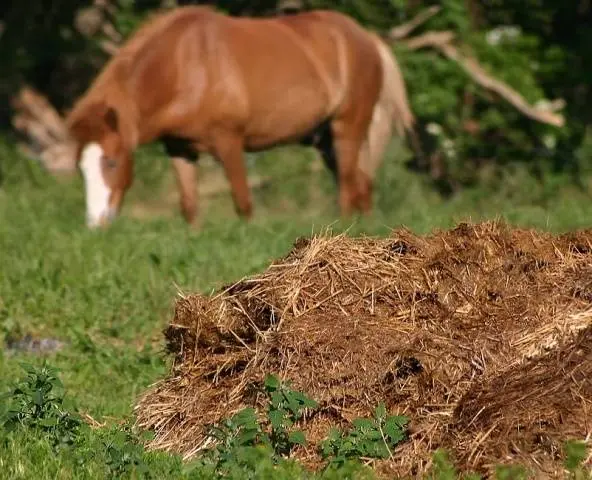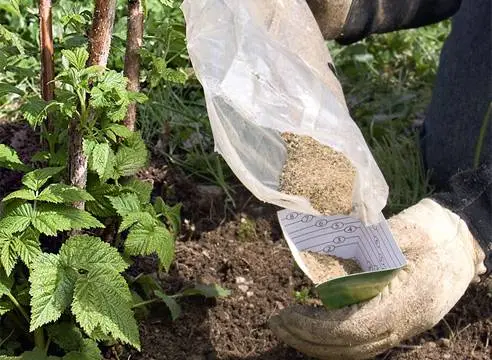Contents
Growing raspberries raises many controversial issues. Careless gardeners consider this plant so unpretentious that they allow it to develop literally like a weed. Caring owners, on the contrary, are concerned about care issues, in particular, spring feeding. Do raspberries need fertilizer in the spring? How to feed raspberries in spring? What types of fertilizers should be used and how much? It all depends on the conditions in which raspberry bushes grow, on their age and type of soil. Naturally, the more fertile the soil, the better harvest you can reap.
Raspberries, indeed, are not among the plants that are too whimsical and demanding to care for. But you can count on a good harvest only in one case: with good feeding of the plantation.
By the way, the last dressing of the bushes is an investment in the future harvest.

Before and after landing
To get more berries in the first year after planting, it is necessary to fertilize even before planting the bushes. Novice gardeners are wondering: when is the best time to plant raspberry bushes, in autumn or spring? In principle, both options have the right to life. The optimal timing of planting plants depends on the region.
Autumn planting of bushes is preferable for southern regions with mild winters.. After the autumn planting, the seedlings safely overwinter, and from spring the plants begin to grow intensively.
For the Middle Strip and the northern regions, planting seedlings in spring is desirable, since the risk of freezing is quite large (especially if the winter is frosty and snowless), and spring bushes will take root without problems. The same applies to varieties with low winter hardiness (for example, black raspberries).

Preparation of beds
Site preparation for raspberry bushes begins with cleaning the soil from plant residues and thorough digging (digging depth is 25-30 cm). It must be taken into account that raspberries grow rapidly, so the initially applied top dressing may not be enough later.
How to feed the plants depends on the preferences of the summer resident and on his capabilities. Both minerals and organics can be used as fertilizers. You can combine different types of fertilizers.
Here are some options for complex dressings based on 1 square meter of land:
- Humus (6 kg), mineral mixtures with phosphates (80 g), potash fertilizers (25 g).
- A mixture of peat and compost (10-liter bucket), half a half-liter jar of superphosphate and potassium salt.
If the land on the site is fertile and is first used for growing garden plants, then special feeding of raspberries in the spring when planting is not needed. It is quite enough to use wood ash as fertilizer when digging the soil (1/2 kg per 1 “square”). The taste of the berries will be much better.
How to feed raspberries when planting
Rooting raspberries require a lot of nutrients, so top dressing when planting raspberries should be applied directly to the hole.
Such fertilizers are added to each of the wells.
- 2 tablespoons of superphosphate.
- A mixture of compost and humus, at the rate of 3,5-4 kg per square meter of land.
- Potassium salt (can be replaced with wood ash) – 2 tablespoons.
If the soil is acidic, then, in addition to the list of fertilizers indicated, add 1 cup of slaked lime to the hole.
Before adding fertilizer when planting in the hole, they must be mixed with the soil. After the bushes are planted, the ground around them must be mulched using:
- Dry humus.
- Peat.
- Sawdust.
- Sawdust.

The first dressing of raspberries
Proper feeding of bushes in the spring is one of the main procedures that give the key to a bountiful harvest of tasty and healthy berries. Spring fertilization time is April.
Before feeding raspberry bushes, some preparation is required:
- Remove branches that have frozen over during the winter.
- Gather the foliage that attacked from autumn.
- If weeds have appeared, they must be weeded by hand before fertilizing the raspberries. Weeding should be done carefully so as not to damage the roots of the bushes.
- If the soil is well moistened, then in April nitrogen fertilizers should be applied as the first top dressing. The amount of fertilizer is approximately 80 g per 1 “square” of the beds.
- Peat, compost or rotted manure are used as mulch for bushes. This keeps the soil from drying out. The manure attracts earthworms, which loosen the soil, allowing air to flow to the roots.

Spring top dressing with organic matter
The use of organic fertilizers in the spring is an efficient and environmentally friendly way to feed.
It is possible to fertilize raspberries in the spring in the following ways:
- Manure, diluted in water, in a ratio of 1:10.
- An aqueous solution of bird droppings in a ratio of 1:20.
Bone meal can be used as mulch under raspberry bushes.
A good result is the use of Kemira (3 tablespoons per 10-liter bucket of water). To feed 1 bush, a liter can of solution is enough.
Oddly enough, weeds, or rather, an infusion of them, can be used as organic fertilizer. The most desirable options are comfrey and nettle, as they are rich in potassium and nitrogen.
Herbal infusion is prepared in this way. Pour 1 kg of a mixture of herbs with 10 liters of water and infuse for 10 days, stirring the mass from time to time. Adding a small amount of plants such as valerian or lemon balm improves the smell of top dressing. The resulting fertilizer for raspberries, dilute with water in a ratio of 1:10 – 1:15 and water the raspberry bushes at the rate of 2 liters per 1 bush.
Here are some top dressing tips from experienced gardeners:
- The best time to apply organic fertilizer is on a cloudy day.
- If the soil is dry, then you need to water the bushes before feeding.
- Do not allow organic solution to come into contact with foliage or stems.
- Prepare organic nutrient solutions in open containers. Fermentation processes are possible only with free access of air.
If you did everything right, then the harvest will turn out well: the berries will be large and sweet.
An important rule: overfeeding a plant is worse than underfeeding.
Mullein and especially bird droppings are highly concentrated, so overfeeding can lead to undesirable consequences, up to the death of plants.

Spring fertilizing with inorganic fertilizers
Potassium, nitrogen salts and phosphates are required for the normal development of the plant. Sometimes potash fertilizers are replaced with ash. Wood ash is beneficial in every way. It is economically consumed, does not contain harmful substances. The amount of ash per square meter of beds is about 150 g. Ash can be applied both in dry form and mixed in water. In addition, the ash neutralizes overly acidic soils.
It is useful to feed old bushes with mineral fertilizers before starting to loosen the ground. Of the ready-made mineral mixtures, Azofoska, Kemira and Ecofoska have proven themselves best. We dilute the mixtures according to the instructions, and then we feed the bushes.
As the first top dressing, if there is no ready-made mixture, you can use ammonium sulfate (15 g per square meter of plot). Fertilizer is scattered under plants, not dissolving in water.
From about the age of four, raspberries are fed with a mixture of mineral fertilizers and organic matter. Consumption per 1 square meter is.
- Potassium salt – 3 g.
- Nitrogen fertilizers – 3 g.
- Phosphate – 3 g.
- Humus – 1,5 kg.
Excellent as a complex top dressing and urea. A ten-liter bucket has 1 shovel of humus and a matchbox of urea. Top dressing is so strong and useful that it is enough for the entire growing season. It is even more useful to combine the use of a mixture with urea with mulching with sawdust, chopped straw or dry rotted manure.
If there is no organic matter, then this recipe will do.
- Potash fertilizers – 40 g.
- Superphosphate – 60 years
- Ammonium nitrate – 30 g.
These ingredients must be diluted before feeding in 10 liters of water.
Potassium chloride should not be used to feed raspberries: this substance can harm shrubs. And superphosphate is useful, as it contains many useful elements: sulfur, magnesium and potassium.

We evaluate the appearance of the plant
According to experienced gardeners, the appearance of plants helps to choose the best option for feeding. By the appearance of raspberry bushes, one can judge which substances it lacks, and which, on the contrary, are too much.
- Nitrogen deficiency. The foliage on the bushes is small, faded.
- Lots of nitrogen. Shoots and foliage grow too intensively, have a dark shade. The berries are showered unripe, the yield is significantly reduced.
- Not enough potassium. The foliage is painted brown along the edges, reminiscent of scorched. Plants tolerate winter cold worse.
- Phosphorus deficiency. The bush gives weak shoots.
- Insufficient amount of magnesium. Bushes do not grow well, the leaves turn yellow from the center to the edges.
- iron deficiency. The color of the leaves is unnaturally yellowish, with green veins.

Spring top dressing and subsequent fertilization throughout the year will allow you to get a good harvest of tasty and fragrant berries. By identifying signs of nutrient deficiencies in the appearance of plants, you can correct the situation, choose the right fertilizers and make the plant more intensive. The berries will turn out more odorous, large and tasty.










